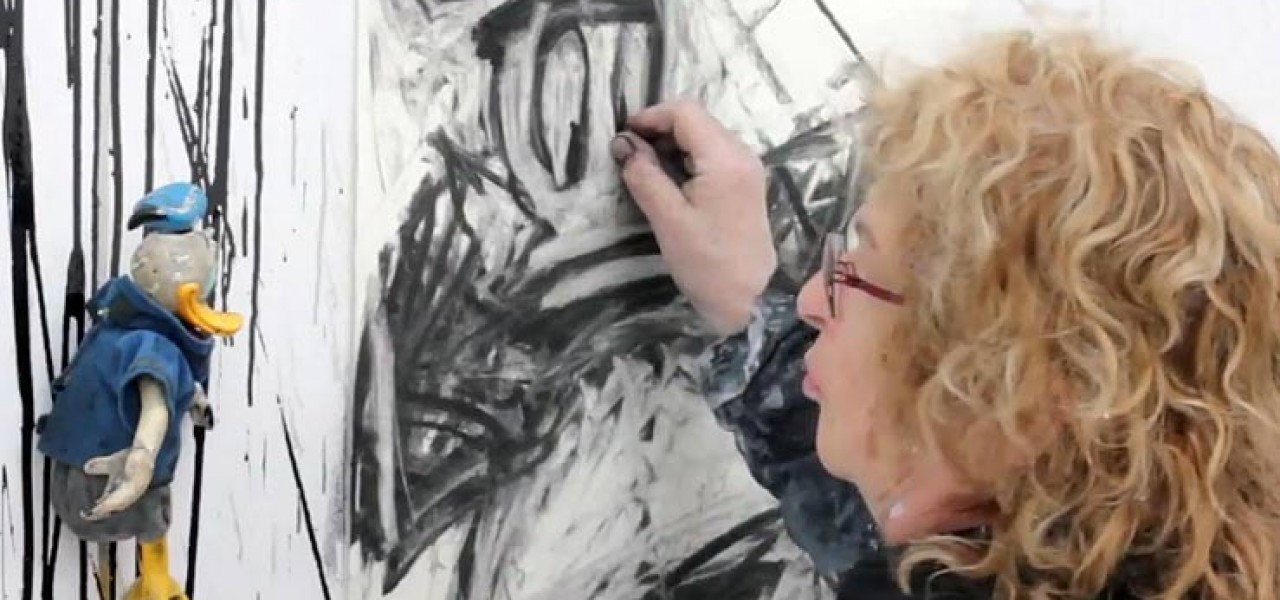
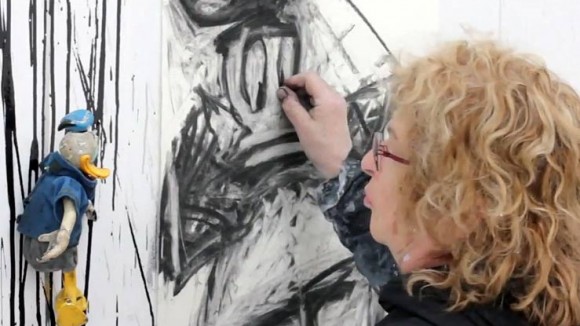
Meet Joyce Pensato And Her Expressionist Remixes of Cartoon Icons
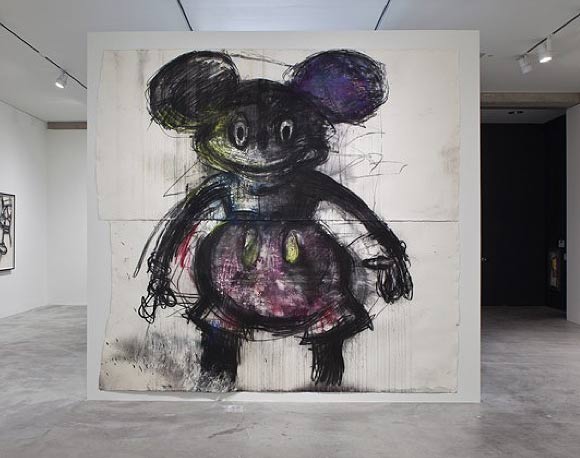
Joyce Pensato (b. 1941, Brooklyn NY) has been painting cartoon characters for years. She takes icons of cartoon art—Felix the Cat, Donald Duck, Batman, Cartman from South Park—and renders them in smudgy charcoal and pastel or runny enamel paint. She works mostly in black and white, occasionally introducing silver and gold for contrast. Though her work seems grounded more in graffiti art, she actually draws from fine art history, from the likes of the Abstract Expressionists, and Philip Guston, who was also influenced by comics.
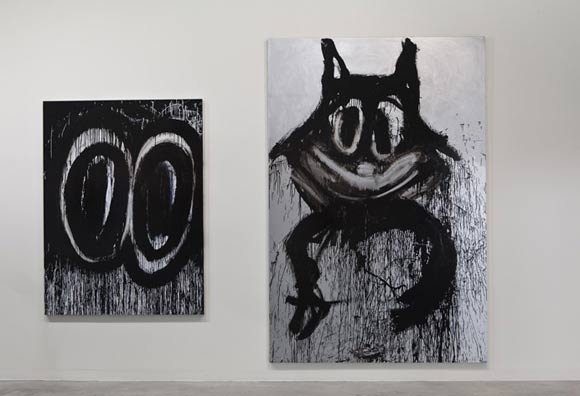
Pensato’s cartoon icons become doubly iconic—images of images, removed another step from their origin in a way that Andy Warhol might have approved of. Pensato’s mice and ducks are not mere copies though, but rather, her own expression, both innocent and disturbingly sinister, more subtly deviant than any deviantART image. Likenesses vary; in one work Mickey Mouse might be potrayed in a childlike fashion, and in another resemble the creepy monkey-in-a-mouse-suit from Babes in Toyland (1934). She works over her charcoal until the changes show as ghostly palimpsests; drips of enamel form scrims down her paintings.
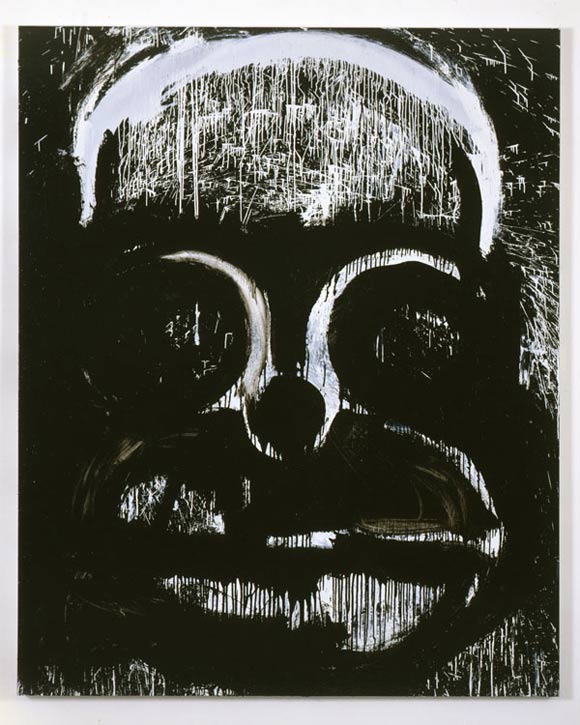
Pensato’s work, which is in the collection of the Musem of Modern Art, has received extensive recognition in the art world including the Guggenheim Fellowship (1996), the Pollock-Krasner Foundation Award (1997), and the Robert de Niro, Sr. Prize (2013). Her first museum survey, cheekily entitled “I Killed Kenny” (yet another animation reference), debuted last year at the Santa Monica Museum of Art, and ended its second run this month at the Contemporary Art Museum St. Louis. Given the chance to take on the white box that is the classic form of a contemporary art gallery, she brings chaos to it, a chaos she controls. That chaos is well represented in “Joyceland,” currently at London’s Lisson Gallery, where she has recreated her studio’s messy glory. In one room paint-spattered toys, furniture and studio equipment cover the floor, while photographs for inspiration are tacked on the walls. Much of the gallery is more traditional, cold white space with works hanging or painted directly on the walls. Homer Simpson gazes blankly outward; Batman’s mask fills one wall.
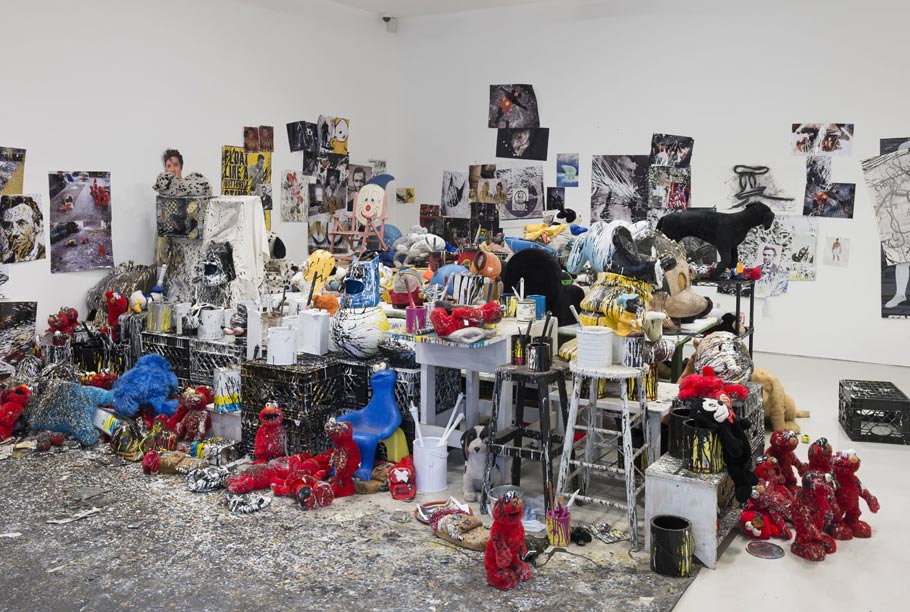
Below you can see Pensato discussing the exhibition:
If you want further information, Pensato’s webite is not very useful, however, art critic Tyler Green has interviewed Pensato on his Modern Art Notes podcast last year. “Joyceland” runs at the Lisson Gallery (27 Bell Street, London) through May 10. The pieces from the show can be seen on the gallery website.

